by | Jan 3, 2014
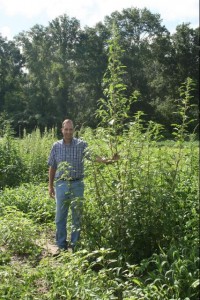
Palmer amaranth can reach heights up 10 feet and signal real trouble for hunters, farmers, and land managers. Loaded with numerous small seeds, mature plants and “offspring” are difficult to control. Photo Courtesy of University of Florida / IFAS
Deer feeders are common in North Florida, and “deer corn” is sold in multiple markets. Cross-roads convenience stores sell it in plain brown bags and big box stores in town sell it in camouflage bags with three color pictures of giant bucks on the front. With the high price of corn in 2012, many hunters saved a few dollars buying “combine run” corn from local farmers or corn screenings from grain elevators. The corn’s no different, however, either product can contain weed seed, especially Palmer amaranth. These weeds can mean big trouble for farmers and hunters.
Palmer amaranth is a species of pig weed, but it’s not your granddaddy’s “careless weed”. It’s taller than either red root pigweed or spiny pigweed, and is becoming resistant to several herbicides, most notably glyphosate (“Roundup”). Amaranth seed are small and plentiful (1 to 1.5 millimeters in diameter) and easily can fit in the nooks and crannies of grain harvesting and handling equipment.
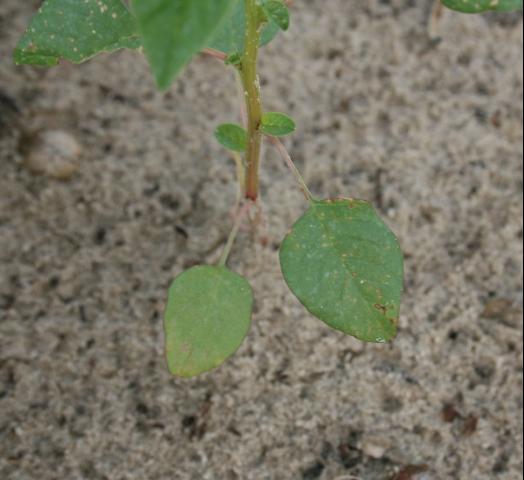
Palmer amaranth first true leaves have small notches on the end and can serve as an identifying characteristic. Photo Courtesy of University of Florida / IFAS.
Once Palmer amaranth seed make it into a deer feeder, there’s a huge opportunity for seedlings to take root in places under the radar of typical scouting and control measures. If these seedlings are herbicide resistant, you’ve done far more harm to the landowner than any savings on corn cost can offset. Conservative estimates indicate herbicide costs have at least doubled due to herbicide resistant weeds. Do your local farmer a real favor; scout and control weeds coming from your deer feeder.
Further information on identifying and controlling Palmer amaranth is available from your county Extension agent or at http://edis.ifas.ufl.edu/ag346
Feeding corn to deer and turkey is permitted by the Florida Fish and Wildlife Conservation Commission as long as the following restrictions are met. “Resident game and wild hogs may be hunted in proximity of year-round game-feeding stations on private lands, provided the feeding station has been maintained with feed for at least six months prior to taking resident game,” and “Wild turkey may not be taken if the hunter is less than 100 yards from a game feeding station when feed is present.” See General Information regarding Feeding Game at http://myfwc.com/hunting/regulations/general-information
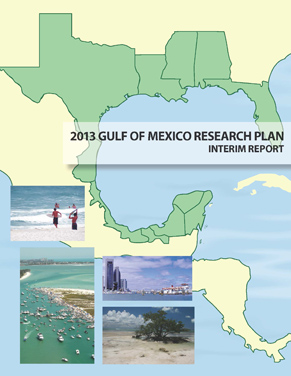
by Scott Jackson | Dec 2, 2013

Gulf of Mexico Research Plan Interim Report
You can provide input to numerous groups around the Gulf of Mexico that are developing regional science and restoration plans or funding Gulf research through a single survey. <<<Click Here to Take the Survey
This survey is part of an update to the Gulf of Mexico Research Plan (GMRP). This project assists the Gulf of Mexico research community in identifying research and related priorities and learning if priorities shifted during the past six years.
Multiple groups already have used input collected through previous GMRP efforts to identify and fund research, and the 2013 survey results will be distributed widely as a service to the research community. The results of this survey will be shared with the Gulf of Mexico Research Initiative (GoMRI), NOAA Restore Act Science Program, National Academy of Science’s Gulf of Mexico Program, Gulf Coast Ecosystem Restoration Council and other groups. The GMRP efforts are partially sponsored by NOAA and the four Gulf of Mexico Sea Grant college programs.
Responses will be anonymous, and it will take less than 15 minutes to complete this critical survey. The survey will close on Dec. 13, so complete it today.
For more information contact Steve Sempier, Sea Grant Gulf of Mexico research planning coordinator.
by Scott Jackson | Nov 29, 2013
Check into the lodge at Wakulla Springs State park on a crisp cool evening and you are immediately greeted with the warmth of an open hearth fireplace and the security of stone walls radiating comfort and solace. These stately accommodations meet all your needs for refuge and rejuvenation with opportunities for an old fashion game of chess or checkers, great food, and time to reconnect with cherished friends and family.
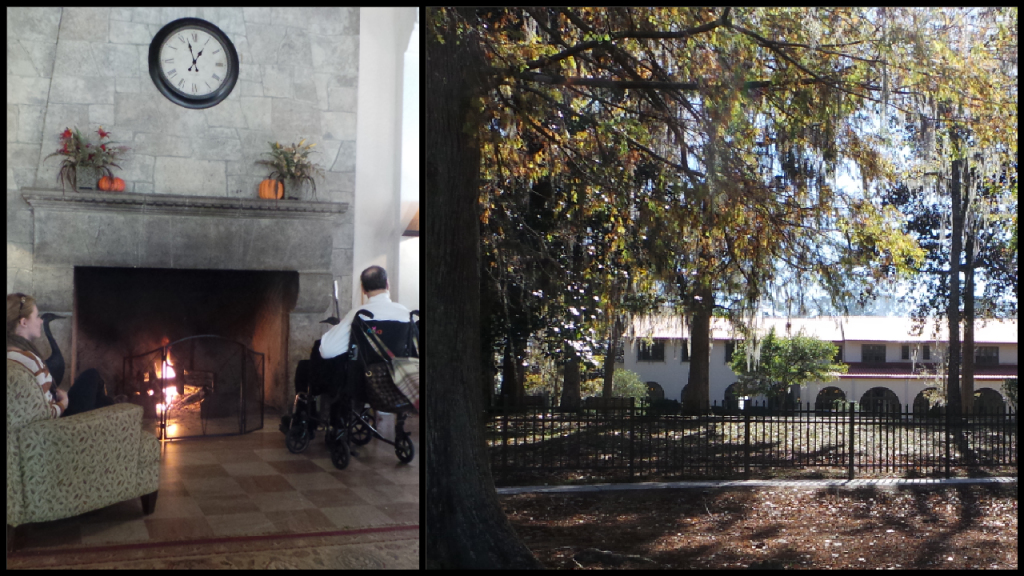
Wakulla Springs Lodge offers guests warmth and rest from the winter’s cooler weather just like the springs offers manatees refuge on winter’s coldest days. (Photos by L. Scott Jackson)
Wakulla Springs hosts about 200,000 visitors each year and is one of North Florida’s most popular swimming spots with peak attendance between April and August. It’s a great place to beat the heat on a hot summer’s day. The same cool 250 million gallons of 69F degree water that provides welcome relief to visitors on hot summer’s day also provides an inviting warm refuge on winter’s coldest days to another type of park guest, manatees.
Wakulla Springs is the Gulf of Mexico’s northernmost geographic location where manatees congregate and consistently overwinter in large numbers. Last week, park guides estimated 30 individuals in the springs and river run.
Florida Fish and Wildlife Conservation and Commission / Florida Wildlife Research Institute’s winter synoptic aerial survey of Florida’s manatees in 2011 totaled 4,834 individuals. Improved survey techniques have resulted in increased estimates for Florida manatees in recent years, however, they still remain listed as endangered.
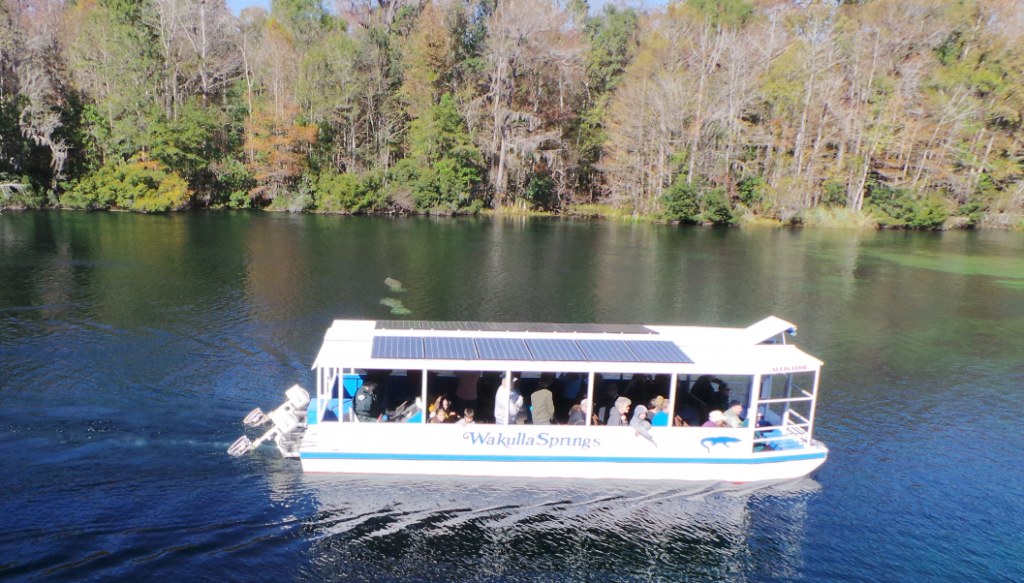
Daily river cruises on the Wakulla River are a great way to see manatees and other unique wildlife. (Photo by L. Scott Jackson)
Consistent water temperatures below 65F can result in stress, pneumonia, or colds in manatees. Other environmental conditions can also cause problems for manatees. This year, a large number of Florida manatee moralities have been reported as a result of a harmful algal bloom on the Atlantic Coast in the Indian River Lagoon. Florida manatees are also frequently struck by boat hulls and boat motor propellers; the signs of which are often seen in individuals with tell-tale propeller scars.
[youtube=http://www.youtube.com/watch?v=0D2tNXrQ5CI]
Education and stewardship are two of the best ways to help manatees. You can connect with these Florida ambassadors locally on a Wakulla Riverboat Tour at the State Park or through outfitters that provide kayaks and local guiding knowledge. Simple changes in home practices that protect water quality also protect the water resources used by manatees and other wildlife. Observing manatee protection zones and reducing boat speed also have been shown to reduce the impact of boating activities on manatees. To report sick or dead manatees, please call the FWC Wildlife Alert Hotline at 888-404-FWCC (3922).
Read more manatee facts in the following UF/IFAS publication: Life in the Sea.
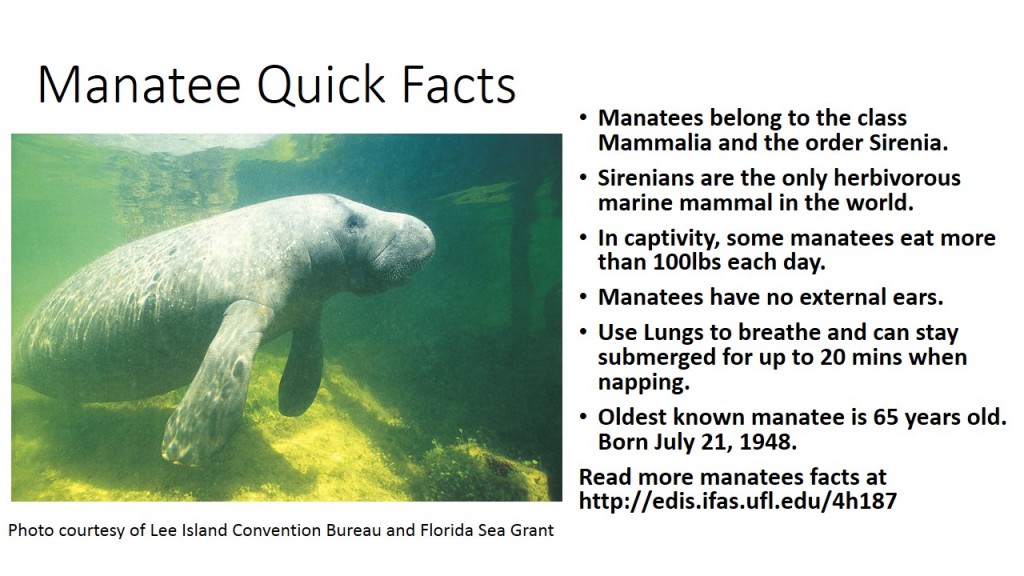
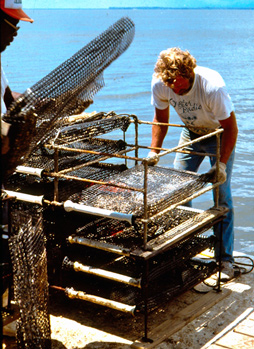
by Bill Mahan | Jul 25, 2013

Extensive methods of oyster farming have been promoted in various forms and under changing laws for over 100 years in Florida. (UF/IFAS photo)
What: A Conversation About Oyster Aquaculture
When: Monday, July 29, 2013, 2 to 5 p.m.
Where: Community Center, Apalachicola (Ten Foot Hole)
Seeking insights into the pros and cons of growing oysters, Apalachicola’s commercial oyster industry has asked members of the University of Florida Oyster Recovery Team to a question-and-answer discussion on Monday, July 29, 2013, from 2 to 5 p.m. in the Apalachicola Community Center. The program is open to the public.
Recent changes in state rules governing shellfish aquaculture in Franklin County have stimulated new discussions about growing oysters to supplement the traditional, wild-caught harvest, according to Karl Havens, director of Florida Sea Grant and the leader of the UF oyster recovery team.
While it is too soon to know if those changes will translate into financial success, culturing oysters remains a demanding and relatively unproven business, Havens said.
“The members of the UF team with expertise in aquaculture methods and economics will answer questions about all aspects of its feasibility.”
In June, the Florida Cabinet modified state regulations to allow owners of two existing oyster aquaculture leases in Franklin County to locate growing cages up off the bottom and into the full water column. The experimental technique applies to just two existing aquaculture leases of 1.5 acres each in Alligator Harbor, near St. Teresa Beach.
Apalachicola Bay’s commercial oyster fishery is trying to recover after extended droughts in 2011 and 2012 dramatically decreased one of the nation’s most productive fisheries. The UF recovery team recommended a long-term plan for future monitoring, research and management to restore the Bay’s oyster populations to historic levels.
The team also recommended a large-scale restoration of the bay’s degraded oyster reefs as a top priority to accelerate oyster recovery.
The meeting is hosted by SMARRT, the Seafood Management Assistance Resource and Recovery Team. There will be no formal presentations, just informal questions and answers.
by Rick O'Connor | Jul 20, 2013
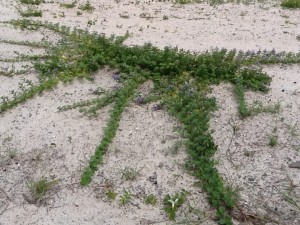
Beach vitex expands its woody rhizomes aggressively; it can actually grow over sidewalks and driveways.
It’s actually a pretty plant, this Beach Vitex (Vitex rotundifolia), and it is very good at stabilizing eroding dunes. In the 1990’s, the state of South Carolina planted this shrub to help restore dunes lost during hurricanes. It was selected because of salt tolerance, production of woody rhizomes (runners) that extend over 60 feet to trap sand, and the beautiful purple flowers that attract beneficial insects; it seemed perfect! However, folks along the Atlantic coast had no idea how invasive it would become a few years later. Residents discovered that it chokes out many of the native species such as sea rocket and sea oats producing an area of only this plant.
It is now causing problems for sea turtles. As you can see in some of these photos, the plant grows over the fore-dune, blocking access for nesting. Beach Vitex grows so aggressively that during the 60 day incubation time many turtle nests are overgrown, entrapping the hatchlings. Some have been found dead, entangled within the rhizome mats. The Beach Vitex “invasion” has become so bad that South Carolina developed a Vitex Task Force to deal with the problem.
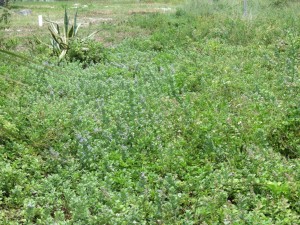
This yard on Pensacola Beach has become overrun by vitex.
Is this a problem for Florida?
According to the records the Early Detection and Distribution Mapping System EDDmaps.com, Beach Vitex is distributed northward to the Chesapeake Bay area and south to Jacksonville. It is found in coastal Alabama and there is one record of the plant in Escambia County.
With so few records in Florida it is not currently listed as an invasive species in our state and there is no program set up to control it. However the Sea Grant Extension Agent in Escambia County, Rick O’Connor, was alerted in 2013 that vitex was in Gulf Breeze, Florida (Santa Rosa County) and possibly on Santa Rosa Island (Escambia County).
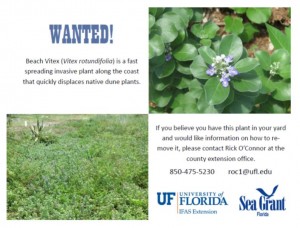
Please circulate to area residents to provide visual identification of Beach Vitex. Contact your Extension Office for control options and help reduce it’s impact on native species.
A “Wanted Poster” was developed by O’Connor to post in the coastal communities of Escambia and Santa Rosa counties to see if the plant was more common than the records indicated. At this time, six properties on Santa Rosa Island have confirmed records of Vitex and two more will be surveyed soon. The wanted poster program was published in the local newspaper which reached the east coast of Florida. Reports from that coast indicate that it has extended south into Volusia County. Okaloosa/Walton Sea Grant Agent Brooke Saari is posting the wanted poster in those counties to see if the plant has reached their coasts.
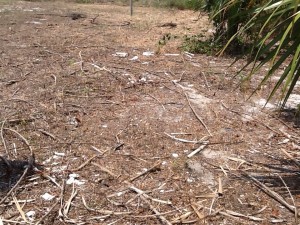
The owner of this yard mowed the vitex. However the woody rhizomes are still present. They will need to either dig this up or use multiple chemical applications to completely remove.
Anyone along the coast of the Florida Panhandle who feels they may have this plant can contact either Rick O’Connor (850-475-5230; roc1@ufl.edu) or Brooke Saari (850-689-5850; bsaari@ufl.edu) and we can confirm identification. The plant is not currently listed as invasive in our state and removal is not required. However, based on the experience in the Carolina’s and other invasive species, if you wish to eradicate this plant doing so early is important. It is much less labor intensive and less costly when there are few plants. If you do choose to remove it please contact your local Extension office first. We can provide methods of successful removal. We would also like to photograph and log the record on EDDmaps.
Editor’s note: Rick provided all the photos in this article.
by Rick O'Connor | Mar 13, 2013
Those who have lived in the Panhandle area for many years will remember the days when our local bayous were places people water skied, kids learned to swim, and fishermen brought home plenty of speckled trout. But today we see little of this. Water quality within our bayous has declined to a point that the general public is concerned about recreation within them and most use them as access to larger bodies of water where they can enjoy water activities.
What Happened?

The mouth of Bayou Grande near Navy Point; a popular recreation location
Those who lived here when things were better say they first noticed problems when new roads and subdivisions were built in the 1950’s. Decline in water clarity was one of the first things they noticed. This was followed by a loss of submerged grasses, fish kills, and an increase in health advisories due to high levels of bacteria. These new subdivisions cleared much of the native vegetation in the neighborhoods and along the water front. The loss of vegetation and new roads allowed for more runoff to reach the bayous. Much of this runoff was in the form of leaf litter, twigs, animal waste, and maybe even carcasses of dead creatures. Once reaching the water these organics are broken down by bacteria into forms of nitrogen and phosphorus that can be utilized by aquatic plants and phytoplankton. This increase in plants will produce more oxygen, but they also consume oxygen in the evening. The high demand for oxygen in the evening can cause dissolved oxygen levels to decline to a point where aquatic life begins stressing; we now say the water is hypoxic. To add to the problem people began to have the desire for lawns of non-native grasses which require fertilizer and watering; thus increasing the nutrient load on the system and an increase in hypoxia. This eutrophication process was a major contributor to the fish kills that the bayous were experiencing.
In addition to nutrients, animal waste could be found in the stormwater. Animal waste can contain pathogens that could be a serious risk to public health. Scientists monitor the concentration of these pathogenic bacteria by using a group of indicator bacteria called fecal coliform bacteria. High levels of these fecal coliforms indicate that a potential health risk could be present and the Escambia County Health Department would issue a health advisory for that body of water. A study showed that the concentration of fecal coliforms increased in areas where coastal development increased, connecting them to stormwater problems.
So What Can We Do?

Marine Science Academy students from Washington High School measuring chlorophyll in Bayou Texar; photo: Ed Bauer
We will probably never be able to get the bayous back to the state they were in before the development boom of the mid-20th century but there are few things we can do.
First, the reason the nutrients and fecal coliforms increased was an increase in runoff. This increase was due to road construction and loss of vegetation. We cannot do much about the roads but we can rethink how we landscape our yards and waterfront property.
The Florida Friendly Yards Program is one that helps residents with selecting plants and landscaping features that require little or no fertilizer or water. This not only reduces the runoff but saves the homeowner money. Rain barrels and rain gardens are also methods that can both reduce water runoff and save money. For more information on this program you can contact Carrie Stevenson at the Escambia County Extension Office; 850-475-5230 or ctsteven@ufl.edu.
Shoreline vegetation can be restored through the Living Shoreline Program. In this program the Florida Department of Environmental Protection works with the homeowner on designing a shoreline marsh and/or oyster reef project. Living Shorelines utilize plants that remove much of the nutrients found in runoff and oysters are known to filter 50 gallons of water per day, reducing turbidity typically caused by runoff. Not only do Living Shorelines reduce nutrient runoff, they also reduce erosion caused by wave energy. For more information on Living Shorelines contact Beth Fugate at beth.l.fugate@dep.state.fl.us.

Planting a Living Shoreline on Bayou Texar in Pensacola; photo: Florida Department of Environmental Protection
A third program that can help bring back the bayou is the Clean Marina / Vessel Program. This program is through the Florida Department of Environmental Protection. For more information contact Jeanne Williams at Jeanne.Williams@dep.state.fl.us.
We hope you will consider using one of these programs to help improve the water quality within our bayous. If you are interested in having a presentation on these programs contact Rick O’Connor at the Escambia County Extension Office; 850-475-5230 or roc1@ufl.edu.
















